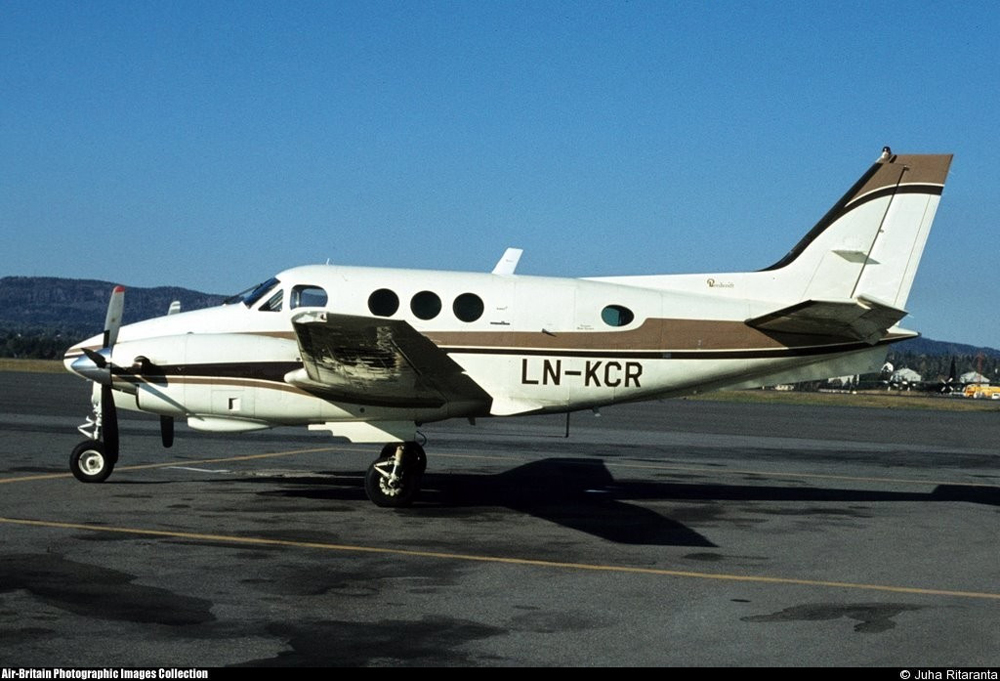Crash of a Beechcraft B90 King Air in Paducah
Date & Time:
Jan 7, 1989 at 1935 LT
Registration:
N784K
Survivors:
Yes
Schedule:
Shenandoah - Decatur
MSN:
LJ-427
YOM:
1969
Crew on board:
1
Crew fatalities:
Pax on board:
2
Pax fatalities:
Other fatalities:
Total fatalities:
0
Captain / Total hours on type:
115.00
Aircraft flight hours:
5293
Circumstances:
During a return flight at night to Decatur, AL, the pilot noted his weather radar was inoperative. He visually avoided thunderstorms (tstms), which had been forecasted. While avoiding tstms, he noted a reduction in engine power, a slight yaw, indications of fuel flow irregularity and that the left and right boost pumps were inoperative. These occurred at about the time, he saw a white arc which he said had jumped from the prop, spinner or nacelle area to the aircraft's nose. Due to the weather, he elected to divert to Paducah. After the airport was in sight, he needed to lose altitude before landing and was cleared to make a 360° turn. While turning, he lost sight of the airport, then rolled out on the wrong heading and started flying toward a strobe light at an industrial complex. When he realized his error and saw the airport, he turned toward the runway; but as he was maneuvering, the aircraft lost altitude, hit trees and crashed. An examination of the engines and fuel pumps revealed no indication of a preimpact failure. No physical evidence of a lightning strike was found, but the nose and engines were badly damaged from impact.
Probable cause:
Pilot failed to maintain proper altitude while maneuvering to land. Probable contributing factors were inoperative weather radar, thunderstorms, lightning, an undetermined electrical problem, dark night, the pilot's improperly planned approach and visual perception, and the trees.
Occurrence #1: in flight encounter with weather
Phase of operation: cruise
Findings
1. (f) flight/nav instruments, weather radar system - inoperative
2. (f) weather condition - thunderstorm
3. (f) weather condition - lightning
4. (f) electrical system - undetermined
5. Fuel system, electric boost pump - inoperative
----------
Occurrence #2: in flight collision with object
Phase of operation: approach
Findings
6. (f) light condition - dark night
7. (f) planned approach - improper - pilot in command
8. (f) visual/aural perception - pilot in command
9. Maneuver - initiated
10. (f) object - tree(s)
11. (c) proper altitude - not maintained - pilot in command
----------
Occurrence #3: in flight collision with terrain/water
Phase of operation: descent - uncontrolled
Occurrence #1: in flight encounter with weather
Phase of operation: cruise
Findings
1. (f) flight/nav instruments, weather radar system - inoperative
2. (f) weather condition - thunderstorm
3. (f) weather condition - lightning
4. (f) electrical system - undetermined
5. Fuel system, electric boost pump - inoperative
----------
Occurrence #2: in flight collision with object
Phase of operation: approach
Findings
6. (f) light condition - dark night
7. (f) planned approach - improper - pilot in command
8. (f) visual/aural perception - pilot in command
9. Maneuver - initiated
10. (f) object - tree(s)
11. (c) proper altitude - not maintained - pilot in command
----------
Occurrence #3: in flight collision with terrain/water
Phase of operation: descent - uncontrolled
Final Report:



